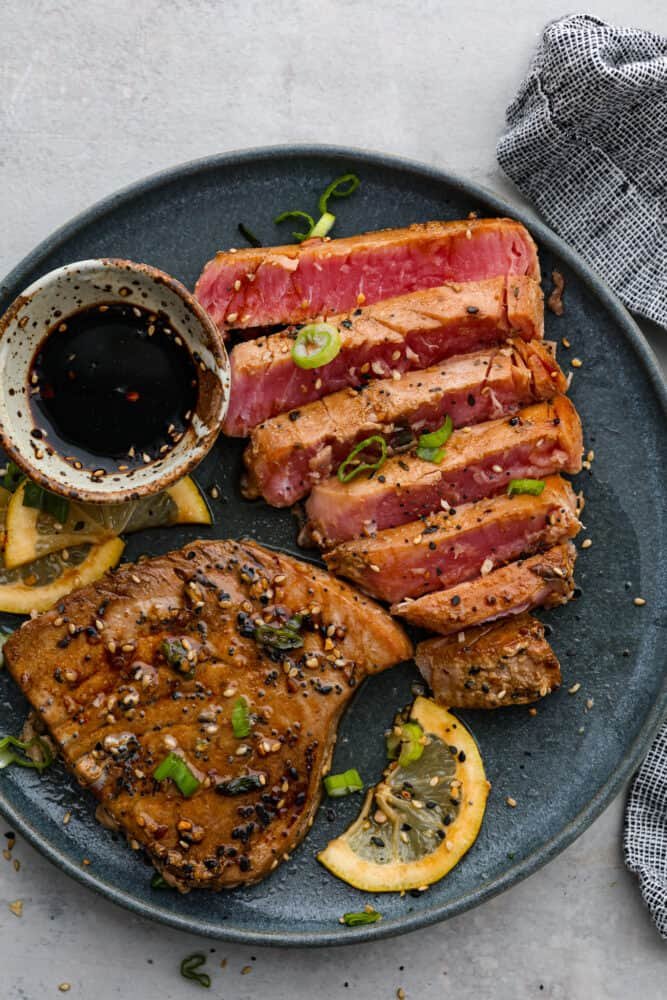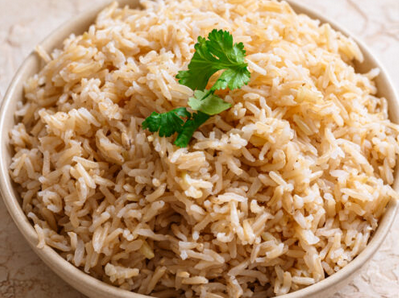Understanding how to cook tuna fish steaks is vital for anyone seeking a protein-rich, sustainable, and gourmet-quality meal experience. Tuna, specifically yellowfin or bluefin species, delivers a meaty texture and deep umami flavor that rivals traditional cuts of beef. Cooking tuna fish steaks requires precision, environmental consideration, and an understanding of heat dynamics. This article breaks down the methods for pan-searing and grilling (charring) tuna steaks, offering insight into sustainability, seasoning logic, and heat exposure techniques.
How to cook tuna fish steaks recipe
1. Selection and Sustainability of Tuna
Before delving into how to cook tuna fish steaks, one must consider the quality and origin of the raw material. Optimal results stem from line-caught tuna, often sourced from regions like the Maldives. Line-caught methods limit bycatch and support marine biodiversity.
Ensure that the tuna carries sustainability certifications. In the UK, the Marine Stewardship Council (MSC) approval is a key indicator. For other regions, localized certifications or research via marine conservation databases should be conducted.

2. Tuna Steak Thickness Standards
Proper tuna steak preparation begins with achieving optimal thickness. Culinary best practice recommends a minimum thickness of 2 centimeters. This dimension ensures that the external surface undergoes the Maillard reaction (caramelization) without thermal over-penetration, maintaining a raw or rare core.
The process includes:
- Using a sharp, long-blade knife.
- Executing singular, smooth slicing movements.
- Avoiding jagged or saw-like motions.
3. Tuna Steak Seasoning Profile
The flavor profile of tuna is naturally sweet and slightly nutty. To amplify this, a compound seasoning rub is required. Here’s a structured breakdown:
- Base rub ingredients:
- 1 teaspoon coriander seeds
- A pinch of fennel seeds
- Coarse salt
- Cracked black pepper
These ingredients should be lightly crushed using a mortar and pestle. The seasoning should maintain a coarse consistency to contribute texture and surface character when heat is applied.
Apply seasoning directly to the cutting board surface and roll the steak over it, creating an even coating.
4. Oil Application Methodology
Tuna steaks require minimal oil for external lubrication. A thin coating of extra virgin olive oil is massaged into the surface. This layer:
- Enhances sear quality
- Prevents excessive sticking in pan-searing
- Is not used for griddle cooking due to fire risk

5. Heat Source Specification and Control
Two primary techniques exist for how to cook tuna fish steaks:
5.1. Pan-Seared Tuna
- Use a non-stick or cast iron skillet
- Preheat pan to medium-high
- Sear steak for 90 seconds per side
- Optional: add oil post-searing for additional crust development
The goal is surface caramelization without internal cook-through. Tuna is one of few proteins that is preferred rare to medium-rare for both texture and safety.
5.2. Charred Tuna via Griddle Pan
- Heat griddle pan to super-high
- Avoid adding oil to the griddle (always dry)
- Press steak down with tongs to ensure contact with grill bars
- Char for 90 seconds per side
This method imparts a nutty, slightly bitter edge through surface carbonization.
6. Post-Cook Resting Period
After removal from the heat source, allow the tuna steaks to rest for 60–90 seconds. This phase enables the residual heat to equilibrate through the protein without continuing the core cook. Drizzle lightly with olive oil and fresh lemon juice to enhance flavor and moisture retention.
7. Presentation Techniques
Instead of slicing, the steaks should be torn by hand. This exposes the natural grain of the fish and presents a more organic, appetizing texture.
Serve with:
- Mixed tomato salad
- Light vinaigrette
- Fresh herbs like basil or dill
8. Considerations for Overcooking
If desired, tuna steaks can be fully cooked. However, this negates the meat-like quality that defines premium tuna preparation. Cooking tuna fish steaks beyond medium compromises both flavor and moisture.
Conclusion
The process of how to cook tuna fish steaks involves selecting sustainable cuts, applying minimal yet effective seasoning, and understanding the interaction between heat and protein. Whether opting for pan-searing or high-heat charring, the key is precision in timing and technique. Tuna is a fish that rewards restraint and finesse.

